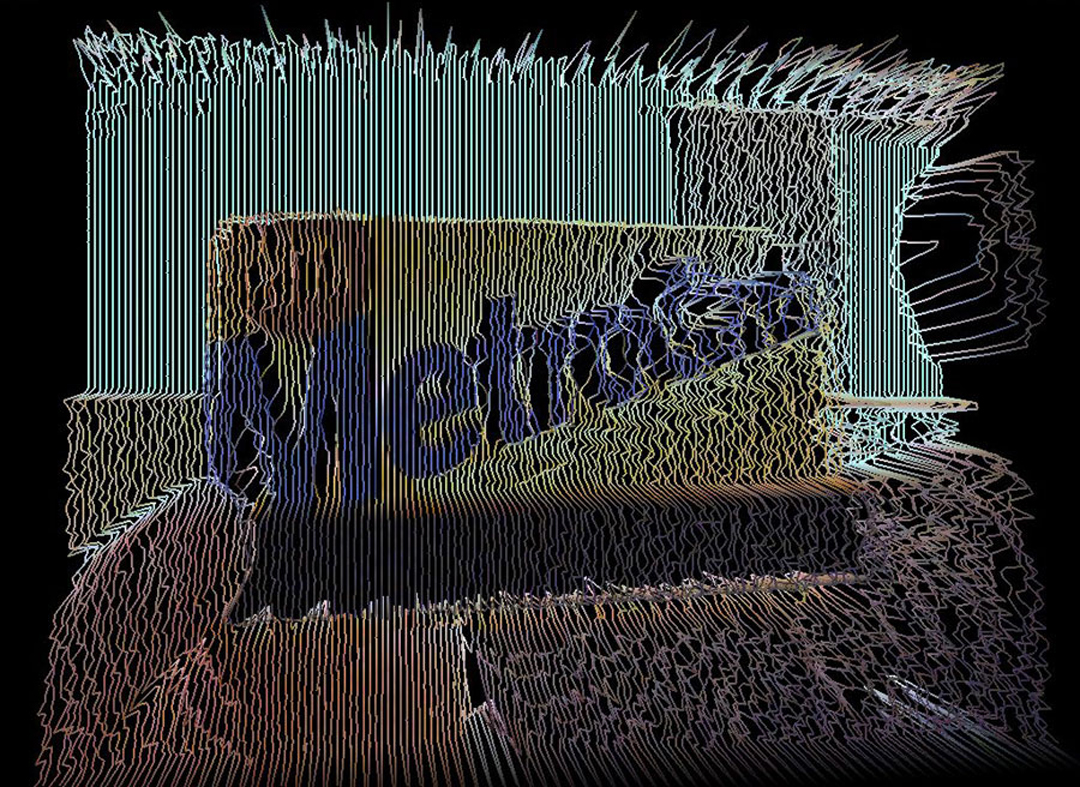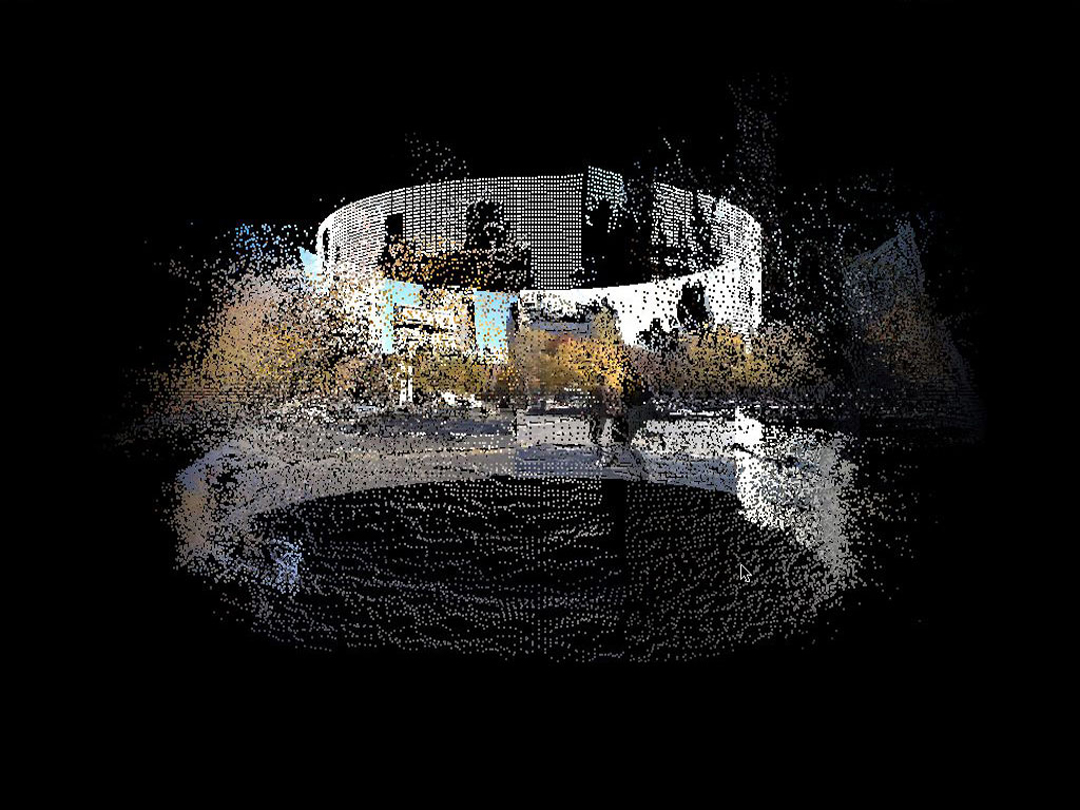“+1D and NeoCubism” by Amaoka
Conference:
- SIGGRAPH 2003
-
More from SIGGRAPH 2003:


Type(s):
E-Tech Type(s):
- Displays & Projection
- Interfaces & HCI
Entry Number: 01
Title:
- +1D and NeoCubism
Presenter(s):
Project Affiliation:
- NYU Interactive Telecommunications Program
Description:
+1D
Abstract
+1D is a video art project that converts 2D real-time video images into 3D computer graphics. Audience will be able to explore the hidden information of the video and manipulate 3D images simply by moving mouse.
1 Introduction
In this project, the image consists of two elements. One is pixel, and the other is continuous line. In order to create 3- dimension graphics, the application reorganizes pixels according to colors. One more dimension (Z-Axis) of each pixel is decided by its color intensity. In other words, the position of the pixel on the Z-axis is determined by its color; meanwhile, it allows users to explore the “inside” of the video by moving the mouse.
2 Technology
+1D project is constituted by one Apple Macintosh PowerMac G4, one wide screen monitor and one web cam or one DV camcorder. The web cam / DV camcorder supplies the videos to the Macintosh, then computer takes the images and manipulates them by the application programmed in C language and OpenGL.
3 Conclusion
+1D is not only a video art project but also a tool of information visualization. The main purpose of creating project is to visualize huge data set in an interesting, beautiful and clear way.
NeoCubism
Abstract
NeoCubism is the combination of “Cubism”, a traditional painting technique, and new media technologies.
1 Introduction
The concept of “Cubism” was developed between 1908 and 1912 in the collaboration between Pablo Picasso and Georges Braque. With this concept, NeoCubism employs 4 video cameras to capture images, in which the cameras are either placed back to back in the center to capture the 360-degree panorama view, or they are placed around an object to capture images of the object in the center.
2 Technology
The four video cameras are connected to an Apple Macintosh computer, and images captured are manipulated by my application programmed in C language and OpenGL. In order to display images from four cameras simultaneously, the 2D video images will be converted to 3D graphics, according to the color intensity of each pixel of the video images. And will be set to a cylinder in the virtual reality world by real interrelated position. Furthermore, by moving of the mouse, the 3D graphics can be viewed from different angles.
3 Conclusion
NeoCubism is to immerse audience in a complete experience of the merge of artistic representation and new technologies to a higher level, as well as to explore more of the aesthetics of looking at video from a variety of perspectives.





